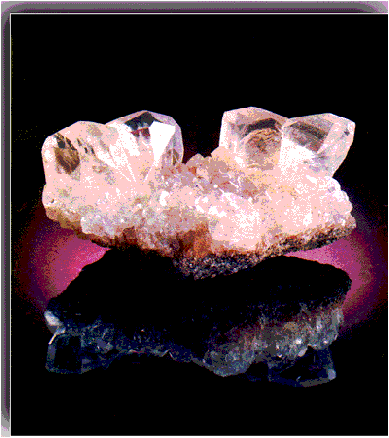Professor Doyle Britton
Department of Chemistry
664 Kolthoff Hall
207 Pleasant Street S.E.
Minneapolis, MN 55455, USA
Phone : +1 (612) 625-9535
Fax : +1 (612) 626-7541
E-mail: britton@umn.edu


Professor Doyle BrittonDepartment of Chemistry Phone : +1 (612) 625-9535 |
|
|
BS UCLA, PhD CalTech
In the first two crystal structures I ever determined, the question was the same- to find the structure of the molecule. Did 4-chloro-1,2-dinitrosobenzene contain two nitroso groups or had the NO's reacted to form a heterocyclic ring? Was arsenic tricyanide pyramidal or were resonance forms involving +As=C=N- important enough to make it planar? In both cases the question was answered (heterocyclic ring, pyramidal), but an unexpected factor also showed up. In the first case, an N atom in the heterocyclic ring was closer than expected to the C1 atom in the adjacent molecule; the orientation suggested that a lone pair on the N atom was interacting with an empty orbital on the C1 atom. In the second case another short distance and the orientation suggested that the lone pair on a N atom was interacting with an empty orbital on an As atom in the adjacent molecule. Except for hydrogen bonding these were the first examples I had run across of localized intermolecular interactions. The phenomenon interested me, and since then we have explored similar behavior all over the right-hand side of the periodic table. (We have not looked to the left of Group IB, otherwise we would have seen it there also.) The interactions range from so weak we are not sure they are there-in (CH3)2Si(CN)2 a CN group points at an Si atom in the next molecule but the distance is not the least bit short- to so strong you might wish to describe them in other words-in (C13)3SnCN the CN group points exactly at Sn atoms in two planar (CH3)3Sn groups and is equidistant between them so that the Sn is five-coordinate and looks like the mid point of an SN2 reaction. There are still questions to be asked about such behavior and structures to be determined to answer the questions. As is always the case when you ask a question closely, other interesting questions appear. In aromatic nitriles, such as p-iodobenzonitrile we have tried changing the nitrile to an isonitrile to see how the N ... I distance compares with the C ... I distance-we took it for granted that the structures would be the same except for the end-for-end flip of the CN group. They were the same- in this case- but sometimes an -CN to -NC switch led to a completely different packing arrangement. This leads to a more general question-when two molecules are isosteric, that is, when their size and shape are virtually identical, what can we learn when they pack in different ways-why are the interactions different in the crystal?
"Crystal structure of tetrachlorobis[mu-imidocarbonylchloridato]diboron," D. Britton and K. Emerson, J. Chem. Cryst. 29, 841-843 (1999).
"Packing Similarities of Three Isosteric Molecules: 4,5-Dichlorophthalic Anhydride, 4,5-Dibromophthalic Anhydride, and 5,6-Dichlorobenzfurazan-1-Oxide Including Three Polymorphs of 5,6-Dichlorobenzfurazan-1-Oxide," C. R. Ojala, W. H. Ojala, D. Britton, and J. Z. Gougoutas, Acta Cryst. B55, 530-542 (1999).
"The crystal structures of p-iodo-N-(p-cyanobenzylidene)aniline and p-cyano-N-(p-iodobenzylidene)aniline," C. R. Ojala, W. H. Ojala, W. B. Gleason, and D. Britton, J. Chem. Cryst. 29, 27-32 (1999).
"Crystal Structures of a Series of Complexes Produced by Reaction of Copper(I) Cyanide with Diamines," F. B. Stocker, T. P. Staeva, C. M. Rienstra, and D. Britton, Inorg. Chem. 38, 984-991 (1999).
| Chemistry Home | XCL Home |